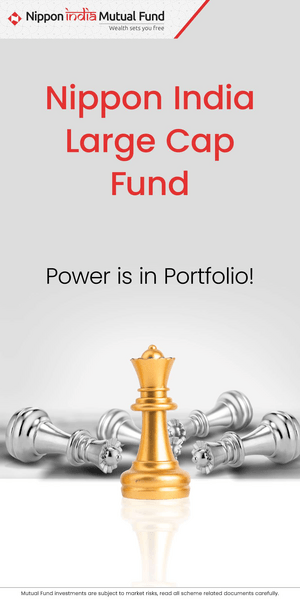Importance of diversification in financial planning

Most of us have heard the old idiom, “don’t put all your eggs in one basket”. If the basket falls, you will break all the eggs. On the other hand, if you distribute the eggs to two or three different baskets, even if one basket falls, you will have eggs intact in the other baskets. This is the essence of diversification. In the context of financial planning, the eggs are your money and the baskets are different types of assets like equity, fixed income, commodities, real estate etc. Asset prices and performances are subject to market risks, but if you diversify across different asset classes or sub-classes, then underperformance of a particular asset class or sub-class will only have a limited impact on your net worth. Diversification is essential to risk reduction and is one of the most important aspects of financial planning.
Diversification across different classes
Different asset classes, e.g. fixed income, equity, gold etc have different risk return characteristics. Investors should understand that, risk and return are directly related; higher the risk, higher the return and vice versa. Fixed income or debt is the lowest risk asset class. Within fixed income, risk free assets like bank Fixed Deposits and Government small savings schemes (Public Provident Fund, National Savings Certificates, Kisan Vikas Patra, Post Office Monthly Income Scheme etc.) are the lowest risk asset. Since risk and return are directly related, the lowest risk assets also give the lowest returns. Debt mutual funds and debentures are in the next risk grade. Within debt mutual funds, overnight funds, liquid funds, ultra-short duration debt funds, money market funds etc. have low risk. Short duration funds and corporate bond funds are next in the risk gradient. Longer duration funds like medium duration funds, dynamic bond funds and long duration debt are higher up in the risk gradient.
Suggested reading: diversification and how to take advantage of it
Gold is step higher than fixed income in the risk gradient. As an asset class, Gold has higher risk compared to fixed income, but lower risk compared to equity. Historically, over very long investment horizons (e.g. 10 years) Gold has given superior returns compared to fixed income and is usually seen as a hedge to inflation in the long term. But in the short to medium term Gold can be more volatile than the fixed income. In the last 10 years, Gold has given 7.7% annualized returns versus 7.4% annualized returns from bank FDs, but in the last 5 years, Gold has underperformed versus fixed income.
Equity, generally, has the highest risk among all asset classes, but also gives the highest returns over sufficiently long investment tenure. At the same time, equity is much more volatile than either fixed income or Gold. In the last 10 years, Nifty 100 has given 16% annualized returns, while Gold and bank FDs gave 7.7% and 7.4% annualized returns respectively. In the last 5 years, while Gold underperformed, Nifty outperformed giving 15% annualized returns.
Different asset classes also outperform each other in different economic cycles. Fixed income outperforms equity in bear markets, while equity outperforms fixed income in bull markets. Similarly gold and equity cycles are different. For example, equity in India outperformed gold in the early 90s, but gold outperformed in the late 90s and early 2000s in the wake of the Asian currency crisis and the dotcom crash. Equity again outperformed gold from 2000 to 2008, but gold outperformed equity from 2008 to 2012. Equity is once again outperforming gold over the last 4 years or so. In 2018 fixed outperformed equity. By diversifying investments across different asset classes you will be able to smoothen your portfolio volatility in different economic or market cycles and reduce the overall risk of your portfolio.
Risk Diversification in Equity
There are two kinds of risk in equity investments, Systematic Risk or Market Risk and Unsystematic Risk. Market risk is caused by events which affect the whole economy of the country or even the world. For example, stock market falling due to depreciation of Rupee, rise in inflation, crude price increase, trade wars between large nations, global recession etc. is attributed to market risk. Market risk is uncontrollable and affects all stocks. Investors should be prepared for market risk, when investing in equity.
The risk of share price of a company falling due to poor financial performance or any unfavourable development which can affect the industry sector is known as unsystematic risks. Unsystematic risk can be caused by company specific factors or sector specific factors. Unsystematic risk can be diversified by investing in a portfolio of stocks. If you invest in a sufficiently large number of stocks, then even if one or two stocks give poor results, your exposure to them is limited and your overall portfolio can still generate good returns for you.
Mutual funds for diversification
Mutual funds are the best instruments for risk diversification. Mutual funds not only diversify company concentration risk i.e. risk of individual stocks underperforming, they also diversify sector risks by investing in multiple industry sectors. Certain types of equity mutual fund schemes like multicap funds, large and midcap funds etc. also invest across different market cap segments, e.g. large cap, midcap and small cap. Different market cap segments have different risk / return characteristics. Large cap stocks have lower risk than midcap stocks, while small cap stocks have the highest risk. On the other hand, midcap and small cap stocks usually outperform large cap stocks in the long term.
Suggested reading: why should large cap funds form the core of your mutual fund portfolio
Mutual funds can also help you diversify across different asset classes. By investing in hybrid funds you can get exposure to both equity and fixed income asset classes. There are different types of hybrid funds. Some hybrid funds have a higher exposure to equity, while some have higher exposure to fixed income. You should select the appropriate fund based on your risk appetite.
Building a well diversified portfolio requires a fairly large capital outlay because you will have to invest in a large number of securities. By investing in mutual funds, you can get the benefits of diversification with a much smaller investment e.g. Rs 5,000 only. Mutual funds pool the money of different people and invest them in different securities to create a diversified portfolio.Each investor in a mutual fund owns units of the fund, which represents a fraction of the holdings of the mutual fund scheme they invest.
You must read: why mutual funds are the best investment class
Conclusion
We have long term, medium term and short term goals in life. Different asset types are suitable for different investment tenures and objectives. Equity and gold are suitable for long term goals. A mix of equity and fixed income may be suitable for medium term goals. For short term goals, you should invest only in fixed income. A diversified mix of asset types can help you meet each of your financial planning goals without compromising the other. Investors should discuss how mutual funds can help them diversify risks with their financial advisors.
Read how wealth sets you free for different stages of life
Mutual Fund Investments are subject to market risk, read all scheme related documents carefully.
RECOMMENDED READS
LATEST ARTICLES
- Two new promising smart beta funds: Nippon India Nifty 500 Low Volatility 50 and Nifty 500 Quality 50 Index Funds
- Going hybrid in the current environment
- Asset allocation is key to long term investing: Hybrid funds make a lot of sense in current market conditions
- Should you invest in momentum funds: Why momentum works in investing
- Nippon India Active Momentum Fund: Invest in winners
The information being provided under this section 'Investor Education' is for the sole purpose of creating awareness about Mutual Funds and for their understanding, in general. The views being expressed only constitute opinions and therefore cannot be considered as guidelines, recommendations or as a professional guide for the readers. Before making any investments, the readers are advised to seek independent professional advice, verify the contents in order to arrive at an informed investment decision.
Mutual Fund investments are subject to market risks, read all scheme related documents carefully.
Quick Links
Follow Nippon India MF
More About Nippon India MF
POST A QUERY





